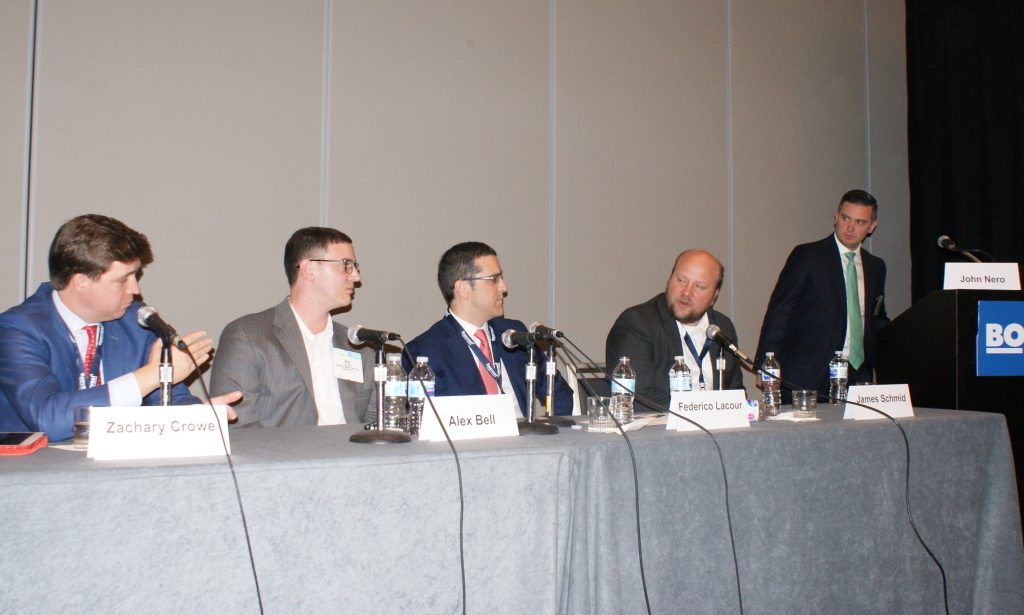For good reason, according to panelists at BOMA MOB conference

A panel of HRE professionals took part in a discussion at last week’s BOMA MOB conference that was titled, “Investor Strategies: Aligning with Capital Providers.” The panelists were, from the left: Zachary Crowe of The Carlyle Group; Alex Bell of Catalyst Healthcare Real Estate; Federico Lancour of Fosun Group; James Schmid of Anchor health Properties; and moderator John Nero of Hammond Hanlon Camp (H2C). (HREI photo)
MINNEAPOLIS — In the early days of the medical office building (MOB) sector, companies that had started to focus exclusively on developing, acquiring and managing such facilities often relied on a network of high net worth individuals, friends and family included, to invest in their projects.
In today’s growing, highly capitalized and sophisticated healthcare real estate (HRE) market, where capital often needs to be deployed quickly and at the lowest cost possible, that type of so-called “country club” capital stack can still work for certain firms and on certain projects.
However, a growing number of growth-oriented companies focused exclusively on HRE facilities, including MOBs, are turning to and aligning with large, deep-pocketed institutional capital partners and fund managers to invest in their developments and acquisitions.
A good example is Anchor Health Properties, a more than three-decades old HRE developer that, beginning with a new management team in 2015-16, embarked on a growth strategy based on expanding three verticals in order to offer wider array of services for its clients, including health systems: management, leasing and investments.
“These all play well off of each other and contribute to the growth of the other verticals,” said James Schmid, Anchor’s chief investment officer. “When we were starting to grow those three verticals, I would say we had modest means to build our platform, and so in order to do a large volume of transactions we knew we had to bring in institutional partners to be able to chase more investments and bring more flexibility, including being able to close quickly on deals, in order to work with best-in-class operators.”
Mr. Schmid, who helps run Anchor with CEO Ben Ochs, made his comments during a panel session at last week’s BOMA International Medical Office Building + Healthcare Real Estate Conference in Minneapolis. The panel, moderated by John Nero of Hammond Hanlon Camp (H2C), was titled: “Investor Strategies: Aligning with Capital Providers.”
He, as well as the other panelists, noted that large, institutional capital partners who want to own MOBs need to be willing to make investments that can start at prices in the $15 million range.
The full content of this article is only available to paid subscribers. If you are an active subscriber, please log in. To subscribe, please click here: SUBSCRIBE





